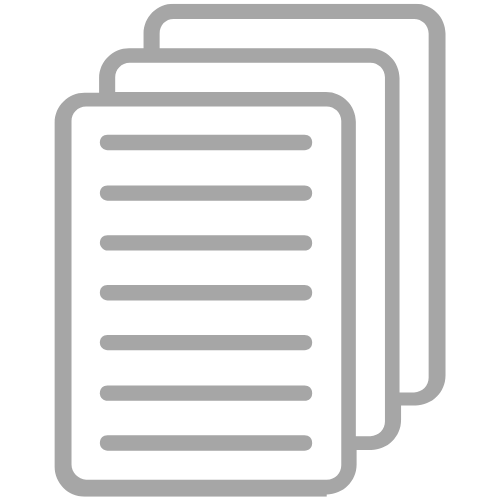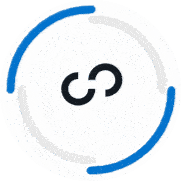Looking to ace the Data Scientist interview questions for the role you are applying for?
Then you’ll need to start gearing up!
Some questions addressed during interviews are universal for any role. They’re usually questions like:
- Why do you want to work here?
- What is your greatest weakness?
- What motivates you?
- Where do you see yourself in 5 years?
However, if you are seeking where to find recent interview questions for a Data Scientist position, look no further than this article. We’ve wrapped up the most common, role-specific questions that you’ll need for your Data Scientist interview.
In this guide, you will learn:
- What Companies Are Looking For When Hiring a Data Scientist
- The Anatomy Of A Job-Winning Data Scientist Interview Answer
- 10+ Data Scientist Interview Questions And Answers
- How To Turn This Data Scientist Interview Into An Offer
Let’s dive in!
What Companies Are Looking For When Hiring A Data Scientist
What do companies look for when they're hiring a Data Scientist?
When hiring a Data Scientist, companies look for candidates with strong technical skills in programming languages like Python or R and problem-solving skills who can obtain actionable insights from complete databases.
The most required skills companies look for in a Data Scientist are:
- Programming Knowledge: Proficiency in programming languages like Python, R, and SQL.
- Data Wrangling: The ability to clean and process data effectively.
- Machine Learning: Understanding machine learning algorithms like regressions, classification, and clustering.
- Deep Learning: Knowledge of deep learning algorithms, such as neural networks.
- Data Visualization: Skills in data visualization tools like Matplotlib, Seaborn, and Tableau.
- Big Data Technologies: Familiarity with big data platforms like Hadoop and Spark.
- Problem-Solving And Critical Thinking: The ability to approach complex data challenges with innovative solutions and a critical mindset.
- Communication Skills: The ability to translate technical findings into actionable insights for non-technical stakeholders.
- Domain Knowledge: Understanding of the business sector, which contributes to making data-driven decisions that align with the company's goals.
- Collaboration and Teamwork: The ability to work well in teams, including non-technical members.
If you are walking into an interview for a Data Scientist role, you’ll need to be prepared to answer these questions in a way that shows you have mastered the most important skills required for the position. This goes way beyond simple, one-sentence answers. Let’s break it down in the next section.
The Anatomy Of A Job-Winning Data Scientist Interview Answer
Remember this: every question you’re asked during an interview rarely asks for a basic answer.
For instance, let’s say the hiring manager asks you what motivates you.
Sure, you could answer something like “What motivates me is working in cross-functional roles”.
Or…
You could go with something like this:
“What motivates me is the opportunity to work cross-functionally with teams to meet client expectations. For instance, two years ago, a client signed on to pilot a $10M deal. We didn’t find out that they were upgrading the websites for their entire brand portfolio until after the deal was done.
Their current platform didn’t allow us to capture data that was crucial to our value prop (90% of what we sold them). At our 3 month check-in, the client told us we had to deliver useful data in the next month or they would take their business elsewhere and the $10M deal would be done.
Since the data wasn’t readily available we needed an alternative. I set up a cross-functional meeting with our engineering team and the client agency (who had site data in 3rd party tools). While our team extracted the data, I created a team of three analysts and briefed them on our needs. They dug into the agency’s 3rd party data and manually matched it with data in our system.
We were able to get the data we needed for our client. We met with the client to present our solution. We showed them how we matched the data and walked them through the full breakdown of how these granular insights could improve their ad-targeting data to reduce costs and drive more sales.
That meeting resulted in a contract extension worth 316% ($20M+) more than the original deal.
Additionally, our team standardized a process for data matching so we could avoid this situation in the future.”
Much better, right?!
If you find this approach a bit daunting and you’re getting chills just by thinking about how you’ll craft a thorough answer, don’t worry, because I have news for you.
The truth of the matter is this answer actually follows a secret framework many candidates are unaware of. It’s called…
The 4-Part Framework of a Job-Winning Interview Answer
The example above follows a specific framework that breaks down into four parts:
Part #1: Tie Directly to The Role
This part doesn’t actually go into the answer, but it is the first action you should take when preparing for interviews. Before you begin crafting your answer, make sure that the example and story chosen tie back to the specific qualifications and goals required for the role.
This exercise will help:
- Find 10+ job descriptions that align with your target role
- Review each job description for skills and qualifications
- Add each new skill to a spreadsheet. For each repeat skill, add a +1 in the column next to the skill
- Sort from Highest to Lowest in the frequency column
Use the top 5-10 skills as the basis for the examples and answers you choose to use in this process
Also, some recruiters might open your resume during the interview, so you'll want to make sure your resume matches the job description. Head over to ResyMatch.io to easily scan your resume and see how it matches the job description. Or, you can simply upload your resume and copy and paste the job description below, for free!
Part #2: Set The Stakes
Then, begin your answer by setting the stage and presenting the problem, issue, or opportunity you faced in the given situation. Outline the stakes, such as the wins and losses you would probably face with a positive or negative outcome, then hook your listeners with a cliffhanger.
Part #3: Show The Work
Walk the interviewer through your problem-solving process step-by-step and then include specific examples of skills and experiences the role requires.
Part #4 Wrap Up With A Win
Finish off by highlighting the wins that came from your work with measurable results!
Let’s analyze the example above:
How to Use the 4-Part Framework to Answer Data Scientist Interview Questions
By using this technique, you’ll be able to answer most of the Data Scientist interview questions, like:
How you balance data-driven decision-making with other considerations (e.g., business needs): Be sure to address a situation where you had to balance your actionable insights with other considerations and explain your approach. Explain what the stakes were and how the company would benefit from your work. Then, walk through the steps you took to approach this challenge and the ultimate results you and your team achieved.
How you work with tight timelines: State a situation where you had to work under a tight deadline and what was at stake. Explain why you had to go down the path you took, go through the challenges you faced during this process, and walk through the results you achieved.
See?
This 4-part framework can be easily applied to nearly any question. And, by applying this technique, you’ll be able to show your value and prove you are the right fit for the role!
10+ Data Scientist Interview Questions And Answers
Now that we’ve covered the anatomy of the job-winning interview answer, it’s time you learn what questions might pop up during the interview.
You may expect technical Data Scientist interview questions and also more general behavioral questions. Let’s break them down below!
Data Scientist Technical Interview Questions
Most technical questions will be aimed at understanding if you are fit for the challenges of the role given specific aspects of the company and the team you will be working with.
While they might vary depending on the role you are applying for, here are a few examples of Data Scientist technical interview questions, with answers elaborated using the 4-part framework.
Question #1: How would you handle missing or corrupted data in a dataset?
This question tests your ability to pre-process data before analysis or model training.
Here’s how you could craft an answer:
Example Answer For Questions About Missing Data
“In a project at InnovateX in 2020, we were tasked with predicting customer churn rates but discovered 20% of the dataset was missing crucial customer interaction data. Accurate predictions could save the company millions by retaining customers.
Facing the risk of skewed analyses, we devised a plan to tackle this challenge. Initially, we conducted a comprehensive data audit to identify patterns in the missing data. Utilizing domain knowledge, we imputed missing values for continuous variables with the median and employed mode imputation for categorical variables. For corrupted entries, a rule-based cleaning algorithm was developed based on data integrity constraints.
This approach improved the dataset's completeness by 95%, enhancing our model's accuracy. The result was a 30% reduction in churn rates within the first quarter post-implementation, and our predictive model's accuracy increased by 15%, showcasing the direct impact of clean data on business outcomes.“
Question #2: Can you share details about a machine learning model you've worked on? Explain the goal and how you improved its performance.
This question allows you to showcase your hands-on experience with machine learning projects.
Here’s how you could craft an answer:
Example Answer For Questions About Machine Learning Experience:
“While at DataSolutions in 2019, I developed a recommendation engine to personalize content for users on our platform. The goal was to increase user engagement by tailoring content suggestions. Initially, the engine was based on a collaborative filtering algorithm, which showed promise but had limitations in scalability and novelty.
To overcome these challenges, I integrated a content-based filtering approach, enhancing the model with user preferences and item features. Specifically, I used natural language processing to analyze item descriptions, creating a richer feature set for recommendation.
This hybrid model approach significantly improved recommendation relevance, evidenced by a 25% increase in user click-through rates and a 40% rise in user session time. The success of this project not only boosted user satisfaction but also increased our platform's ad revenue.“
Question #3: How do you ensure your model is not overfitting?
This question assesses your knowledge of model evaluation techniques.
Here's how you could craft an answer:
Example Answer For Questions About Overfitting
“In a project at FinTechPlus, tasked with predicting loan defaults, the initial model exhibited high accuracy on training data but performed poorly on unseen data, indicating overfitting.
To address this, I employed several strategies. Firstly, I introduced cross-validation, using the data to train the model in multiple folds to ensure its performance was consistent across different subsets. Additionally, I simplified the model by reducing the complexity of the decision trees used, trimming down to the most relevant features. I also applied regularization techniques to penalize overly complex models.
These adjustments led to a more generalizable model, reducing the variance between training and test accuracy from 20% to just 5%. Consequently, the model's prediction accuracy on unseen data improved by 18%, significantly reducing financial risk for the company.“
Question #4: Can you explain the concept of a p-value in hypothesis testing?
A question like this checks your understanding of statistical concepts that are crucial in data analysis and interpretation of model outputs.
Here's how you could craft an answer:
Example Answer For Questions About P-Value
“During a project at HealthTech Innovations, we aimed to determine if a new drug was more effective than the current standard treatment. The p-value became our critical statistic for this decision.
I explained to the team that the p-value measures the probability of observing our experimental data, or something more extreme, if the null hypothesis of no difference in treatments were true. For this project, a low p-value (below 0.05) would indicate a statistically significant difference in drug efficacy.
By conducting a well-designed clinical trial and analyzing the data, we obtained a p-value of 0.03, suggesting strong evidence against the null hypothesis. This result led to two wins: firstly, the validation of the new drug's effectiveness, and secondly, the potential for improved patient outcomes, underlining the importance of statistical rigor in healthcare innovations.“
Question #5: What steps would you take in making a decision tree?
This question allows you to showcase your problem-solving and decision-making abilities.
Here's how you could craft an answer:
Example Answer For Questions About Decision Tree
“At RetailX, during the optimization of our inventory management system, we used a decision tree to predict product demand. Our goal was improving inventory efficiency and reducing waste.
I started by selecting relevant features, including historical sales data, seasonality, and promotional activities. Using the Gini index, I determined the best splits to maximize the purity of the nodes. Pruning techniques were applied to avoid overfitting and ensure the model's generalizability.
This methodical approach led to a 30% reduction in overstock and a 20% decrease in stockouts, optimizing our inventory levels and improving profitability.“
Data Scientist Behavioral Interview Questions
Some questions won’t address specific skill sets, but rather behavioral aspects. Here are a few examples you might come across during your interview:
Question #1: Describe a challenging project you worked on. What was your role, and how did you overcome the challenges?
This question allows you to showcase your problem-solving skills.
Here's how you could craft your answer:
Example Answer For Questions About Challenging Projects
“In my role as a Data Scientist at HealthInsight in 2021, we developed a predictive model to identify patients at high risk of chronic illnesses. Accurately predicting these risks could dramatically improve patient outcomes and reduce healthcare costs. However, the challenge lay in the diverse and incomplete patient data sets.
I spearheaded the data preprocessing phase, implementing advanced imputation techniques to handle missing values and creating synthetic variables to capture underlying health conditions. Collaboration was key, so I coordinated with healthcare professionals to validate the clinical relevance of our features.
The model's accuracy was improved by 25%, leading to the early identification of at-risk patients and a 15% reduction in hospital readmissions.“
Question #2: How do you stay updated with new data science techniques and technologies?
This question will allow you to show your pro-activeness in keeping updated with market trends.
Here's how you could craft your answer:
Example Answer For Questions About Market Trends
“In my previous role at TechVista, staying updated was one of the indicators evaluated in our quarterly performance reviews — which was extra-encouraging, as it significantly impact my professional development.
However, I've always been dedicated to self-education. I try to keep myself updated by attending free online webinars and workshops and aslo by taking online courses from platforms like Coursera and edX. Additionally, I'm an active memeber of the Data Science Lab, a LinkedIn group where users share their experiences and challengs with projects they are currently working on.
These initiatives have helped me develop my skills with Python, which I introduced into TechVista by developing a dynamic pricing model that resulted in a 20% YoY revenue increase.”
Question #3: Can you describe a time when you had to explain a complex data science concept to a non-technical stakeholder? How did you ensure they understood?
This question will allow you to showcase your communication skills.
Here's how you could craft your answer:
Example Answer For Questions About Explaining Concepts To Non-Technical Stakeholders
“During my time at RetailGenius in 2020, we developed a machine learning model to optimize inventory levels. Explaining the model's intricacies to our non-technical executive team meant a significant challenge.
I decided to use a simplified analogy, comparing the model to a thermostat regulating temperature—adjusting inventory levels based on predictive “weather forecasts” for sales demand.
I supplemented this with visual aids, illustrating how the model inputs such as historical sales and seasonal trends translated into inventory adjustments. This approach made the concept accessible, facilitating a productive discussion on strategic implementation. The executives fully supported the initiative, which led to a 20% reduction in stockouts and a 15% decrease in excess inventory within six months.“
Question #4: Tell me about a time when you disagreed with a colleague over a project. How was the disagreement resolved?
This question allows you to show your teamwork and collaboration skills in addition to your conflict-resolution approach.
Here's how you could craft your answer:
Example Answer For Questions About Teamwork And Conflict Resolution
“On a project at FinTech Innovations in 2019, my colleague and I had different views on the approach for our fraud detection algorithm. They favored a traditional statistical model, while I advocated for a machine learning-based approach. Recognizing the impasse, we agreed to conduct a two-week sprint for each approach, analyzing their performance on historical fraud detection cases.
This empirical test allowed us to compare results objectively, showing the machine learning approach's superiority in detecting complex fraud patterns.
This resolution not only enhanced our project's success rate by 30% but also strengthened our team's collaborative spirit.“
Question #5: Describe a situation where you had to work under a tight deadline. How did you manage your time and resources to meet the deadline?
This question allows you to showcase your time management skills.
Here's how you could craft your answer:
Example Answer For Questions About Time Management And Deadlines
“During my time at MarketShpere, we had to launch a marketing campaign analysis within a two-week timeframe. The pressure was on. The analysis required processing large datasets to derive actionable insights on customer behavior and campaign effectiveness.
To tackle this, I prioritized tasks, focusing first on data cleaning and segmentation, which were crucial for accurate analysis. I also leveraged automated scripts to expedite data processing and engaged with a colleague for parallel analysis on different segments.
By optimizing our workflow and resources, we delivered comprehensive insights on schedule, enabling the marketing team to adjust their strategies promptly. The campaign's subsequent phase saw a 40% improvement in customer engagement, validating the effectiveness of our time management and strategic prioritization under tight deadlines“
Ready To Turn This Data Scientist Interview Into An Offer?
Then leverage from a proven, all-in-one system for crazy effective job interview preparation.
The Interview Preparation System was designed to help you turn your next job interview into an offer and comes with 30+ lessons and 5 hours of content.
Join thousands of job seekers just like you and start 2024 in a job you love! Click here for more.





































